NH Oyster COVID Relief and Restoration
Market sized oysters not sold in 2020 have outgrown the optimal size range, losing their commercial value.
This project provides immediate economic relief for growers experiencing decreased demand.
The project also explores alternate revenue streams for NH oyster growers to build economic resilience.

In recent years, the growth and expansion of oyster farming has helped to keep New Hampshire’s rich maritime culture alive as an alternative to wild-harvest marine fisheries, which have experienced declines throughout the Gulf of Maine.
But in 2020, the COVID-19 crisis closed the restaurants and markets that usually buy NH oyster growers’ products.
NH Oyster growers estimate that they have only been able to sell 10% of their market sized oysters to traditional buyers in 2020.
NH Sea Grant partnered with oyster growers to provide financial relief and an encourage participation in research and conservation.
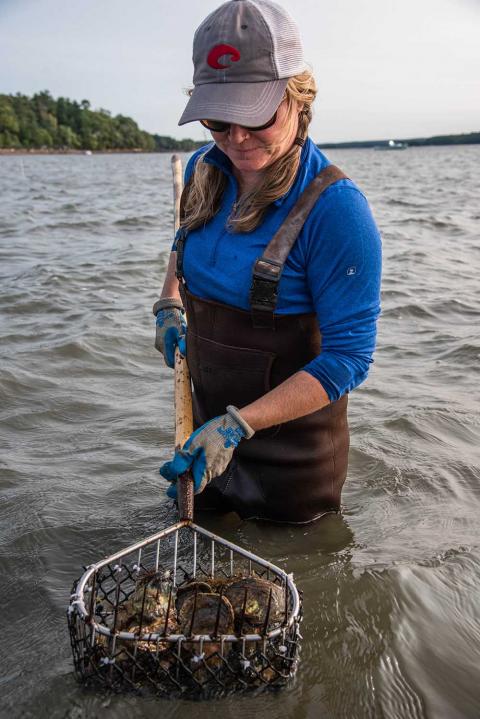
Eight oyster growers in NH are participating in a program to use a portion of their licensed sites for research on oyster population enhancement and ecosystem services. The sites, chosen in partnership with NH Sea Grant, will test the increase to ecosystem services that creating a reef on their farms can create while minimizing impacts to their growing operations.
Each oyster grower has transplanted approximately 10,000 oysters on each site, choosing mostly oysters that exceeded market size or are misshapen and are therefore unmarketable. Growers are receiving relief funding for the both the oysters used in the program and their time transplanting and monitoring oysters in the experimental restoration areas.
NH Sea Grant and the growers will monitor the reefs to assess the success of the re-planting effort, taking into account the number and ages of replanted oysters, and the ecosystem conditions (depth, currents, bottom type) at the site.
The monitoring will also inform an economic assessment of the ecosystem benefits generated by the growers’ labor and investment in the project. NH Sea Grant staff will work with participants to discuss the cost-benefit of the program and to consider future opportunities to manage their farms for enhancing ecosystem services.

9 Farms
9 Farms
from NH Shellfish Growers Association participating
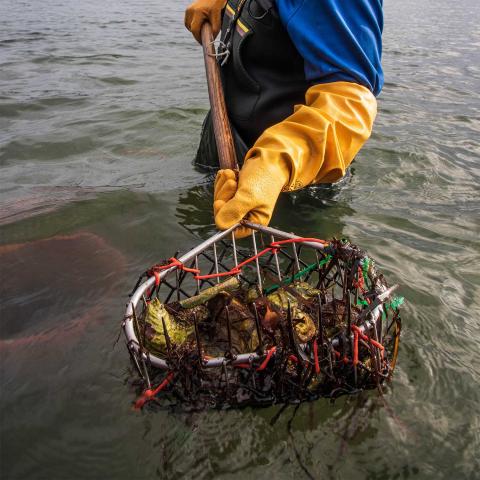
80,000
80,000
Oversized or unsold oysters restored to experimental reefs
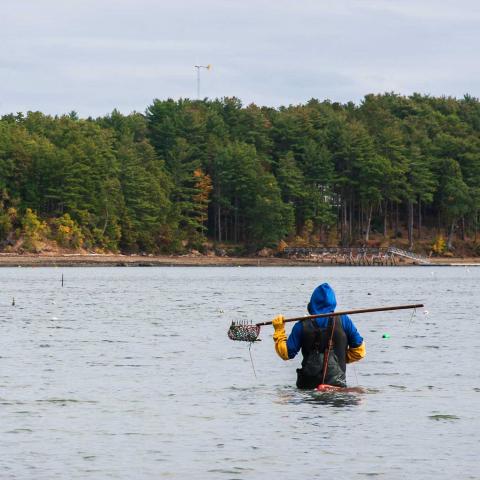
$75,000
$75,000
In relief funds distributed to NH oyster growers

8 Experimental Reefs
8 Experimental Reefs
with oysters under varying conditions in New Hampshire waters
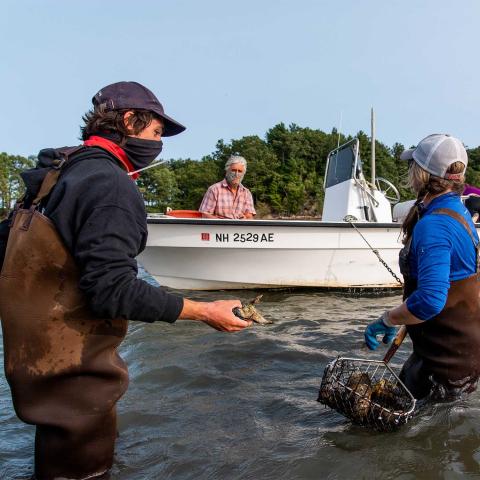
1 Year of Monitoring
1 Year of Monitoring
of growth, survival, and recruitment of oysters on new experimental reefs
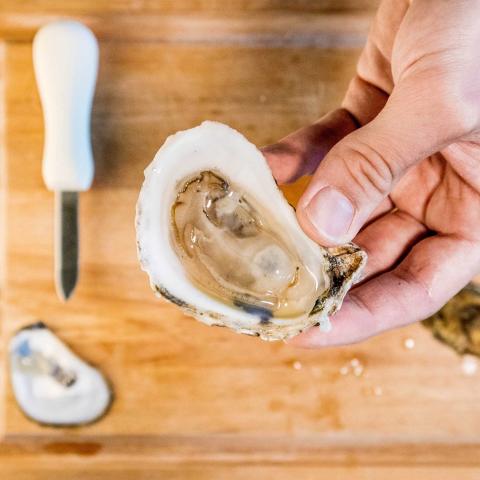
Value added
Value added
Oyster growers explore storefront and shucking facility for alternate revenue streams
Benefits to the Ecosystem
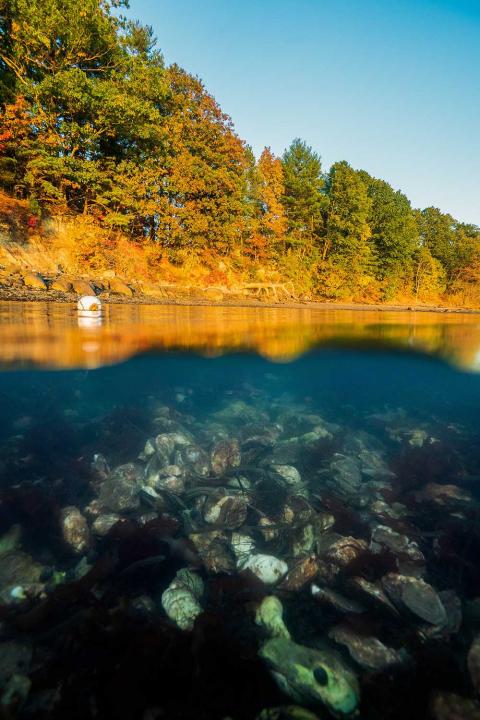
As filter feeders, oysters are key to maintaining the health and nutrient balance of our local, coastal ecosystems.
1 oyster filters up to 50 gallons of water per day! Filtration removes suspended particles – feeding the oysters and creating clearer, cleaner water.
From this filtration alone, the shellfish aquaculture industry in the Great Bay Estuary annually contributes $1.4 million in ecosystem services to the estuarine environment simply by removing excess nutrients from the estuary. (Source: NOAA Center for Coastal Monitoring Assessment study)
Through this project, NH’s oyster growers hope to enhance local oyster populations and bolster ecosystem services by increasing filter-feeding by their transplanted and recruited oysters.
Monitoring will show the potential of reefs on farms to directly improve the ecosystem health of NH estuaries, informing future efforts to restore oysters on or near oyster growing operations.
Benefits to the Industry
Oyster growers have received relief funds, limiting financial losses due to the COVID-19 crisis.
NHSG will assist Swell Oyster Co. in developing their new value-added oyster products to be sold in New Hampshire.
Through the addition of revenue streams and relief funds, the NH oyster growing industry will be more resilient to market and other disruptions.
Find local oysters and seafood
Use our Seafood Finder Map to locate NH grown and harvested seafood close to you
The State of the Oyster Aquaculture Industry
Learn more about oyster aquaculture in New Hampshire with our factsheet.
Questions?
Steve Jones
Assistant Director for Research
NH Sea Grant
stephen.jones@unh.edu